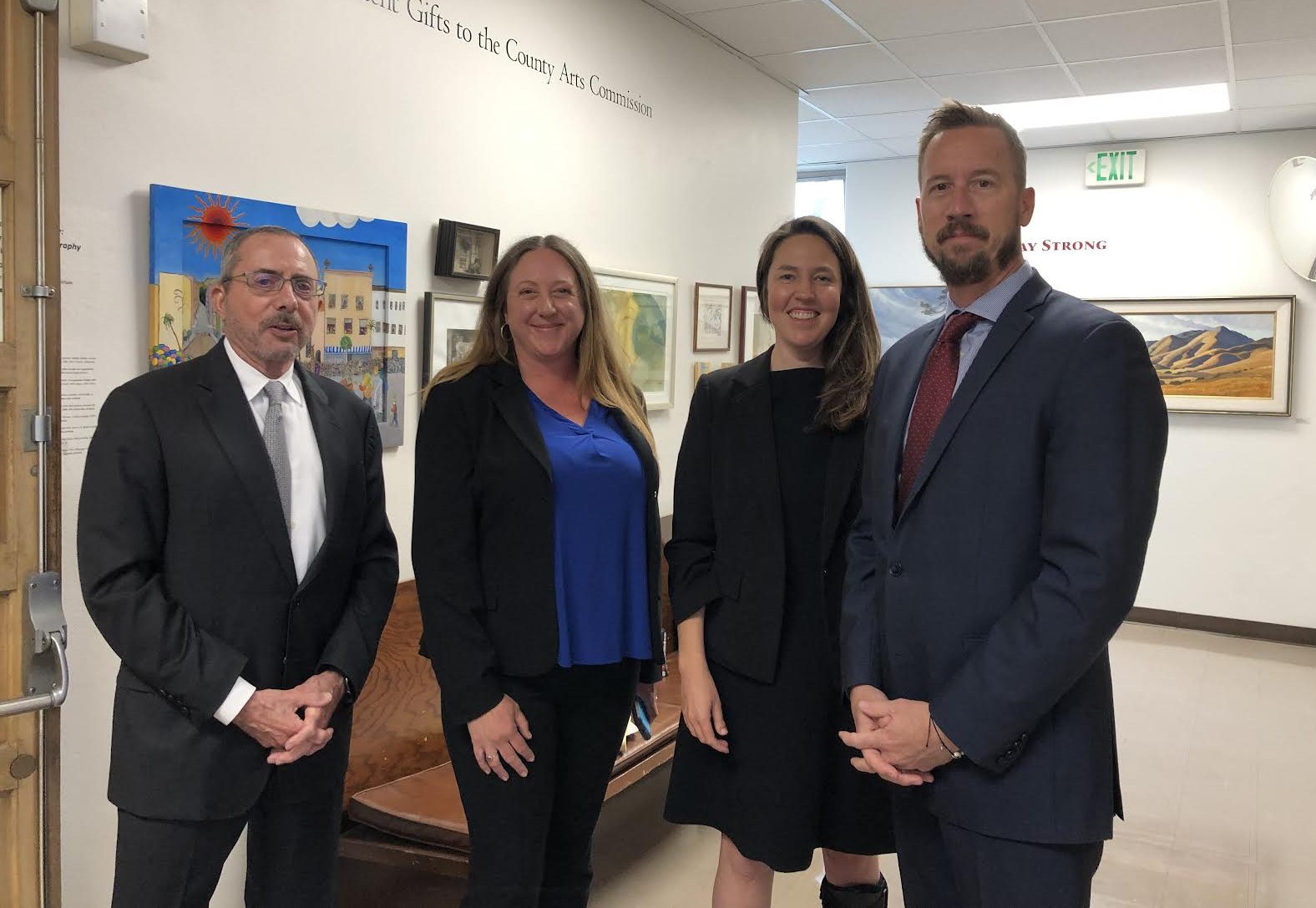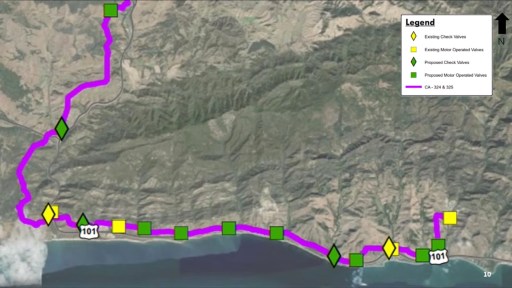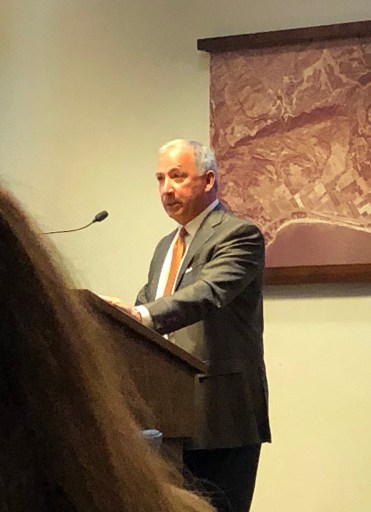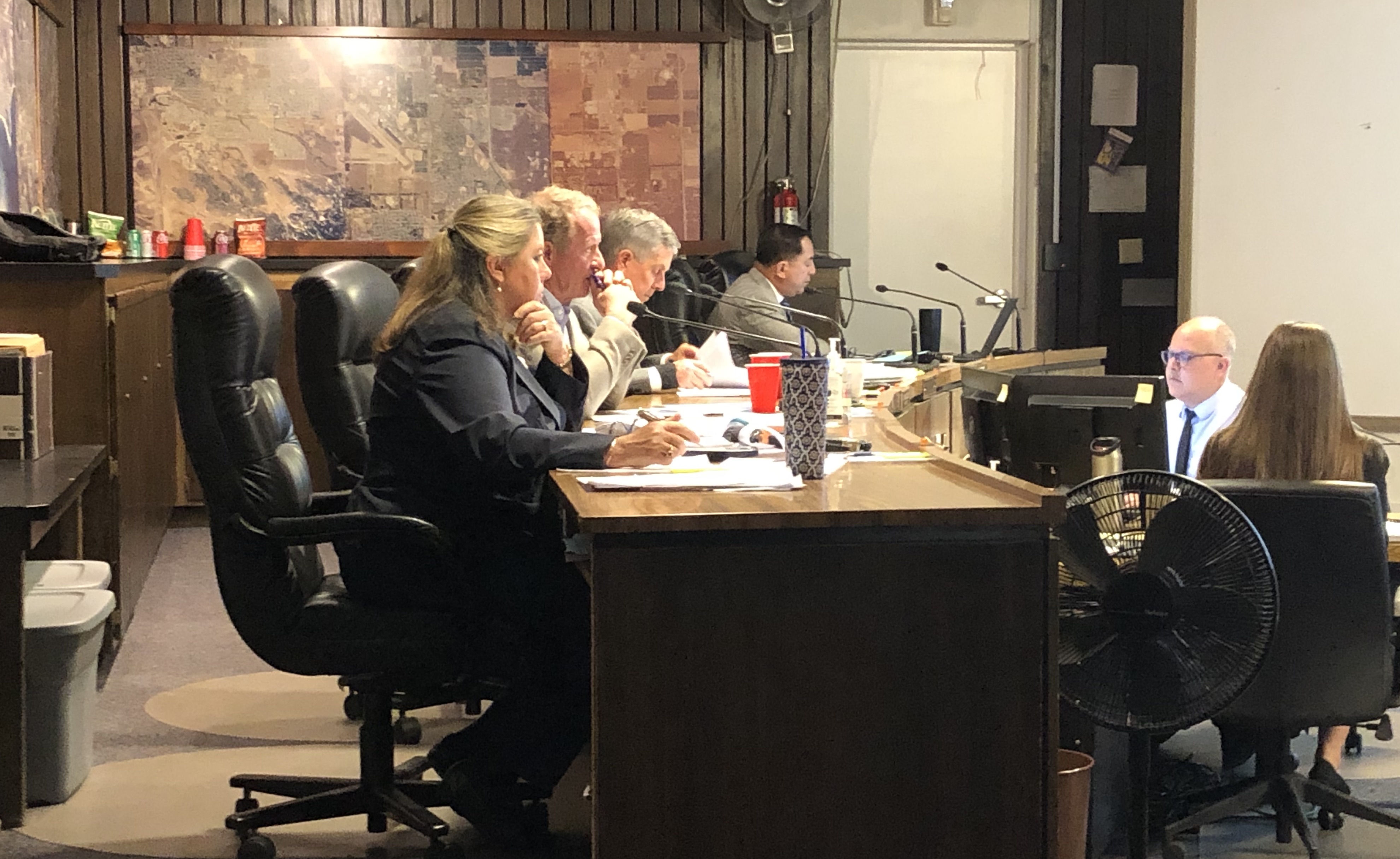‘Reality’ Intrudes into Safety Valves Proposal for Refugio Pipeline
Installation Denied as It Would Lead to Crude Oil Flowing on Gaviota Coast Again

If not for the seriousness of the matter at hand — the eventual restarting of Line 901, the pipeline that caused the Refugio Oil Spill in 2015 — the arguments this morning at the Planning Commission over installing 16 automated safety valves could have simply been appreciated for the artful rhetoric rolled out by the participating attorneys. Ultimately, what seemed like a beneficial solution to pipeline spills was instead found by three of the five commissioners to lead to the resumed flow of crude oil along the Gaviota Coast — without environmental review and apparently before Line 901 was replaced.

First up for the group appealing the application for the valves was attorney Barry Cappello, a master of the startling simile and the seeming stemwinder. Cappello delivered a head-spinning polemic over who owned the pipeline and could therefore do the work, much less submit the application — either Plains All American Pipeline, which was responsible for the rupture and let the pipeline rot into a state of “Swiss cheese”; ExxonMobil, which apparently now owns the pipeline; or a company called Sable, represented by a mysterious “Mr. Flores,” who seems in line to purchase the pipeline in co-ownership with Exxon. But the Planning Commission should not agree to new valves until the owner was in the room, Cappello argued, “so they can tell you this won’t happen again, that the pipeline would not reopen until it was completely fixed. They can put the automatic shutoff valves in then.”
What the audience learned by the end of the hearing was that if the valves were installed, the company could request to resume the flow of oil from the State Fire Marshal, a permit process the public and county could not comment upon. As well, the rupture of Line 901 was due to pipe failures — from age and corrosive soils — and the line ran across private properties that some landowners believed no longer had valid pipeline leases. That lawsuit is headed for trial, said Cappello, on the theory that pipeline closure for “three, four, five years” invalidated the leases.
Interestingly, the next attorney on the appeal was Jessica Diaz with Brownstein Hyatt Farber Schreck. Diaz, who was representing a landowner affected by the pipeline, acknowledged her firm was usually on the side of project applicants, but in this case, there were compelling reasons not to reopen the pipeline, she said. She said the facts in the case were textbook for a finding that subsequent environmental review was necessary. “In 1985, the EIR assured the public that the wrap and cathodic protection system would protect against corrosion,” she said. “As starkly represented by reality, that simply did not occur.”
Ana Citrin, representing the Gaviota Coast Conservancy, made the point that although the application was for safety valves, a realistic picture of the project’s impacts was a foreseeable restart of the pipeline. “Frankly, there’s no purpose to the valve project if not to use the pipeline,” she said.

The company applying to install the valves, Pacific Pipeline Company, was represented by Michael Cash, of Liskow & Lewis of Houston. He explained that Pacific had bought the pipeline from Plains and was an affiliate of ExxonMobil. Sable would not own it until the deal was done, he said. Cash demonstrated how the various valve systems worked, arguing that adding more automated valves avoided human error. In fact, AB 864 — sponsored by Das Williams as an assemblymember in 2015 — required replacement pipelines near sensitive areas along the coast to use the best available technology, such as automatic shutoff systems. Pacific Pipeline had faced a deadline of April 23, 2023 for the installation, which was recently extended to April 2024.
Cash also refuted the “Swiss cheese” description of the nearly 40-year-old pipeline. He said it had been filled with nitrogen under pressure since the spill — Cash could not bring himself to say “spill,” calling it the “thing like what happened in 2015” — and the pressure had stayed constant since then.
Dawn Sestito of O’Melveny & Myers followed up and argued the appellants couldn’t get to CEQA because the construction area for the 16 valves totaled less than eight miles, which is one of the exemptions for reopening CEQA review.
During the rebuttals, the best lines came from Cappello — “Swiss cheese in the ground for almost 40 years would really stink” — and Cash — “Pacific Pipeline Company is the owner; we’re taxed as the owner, we’re sued as the owner.”
Two of the five planning commissioners decided to look at the application “with horse blinders on,” as Vincent Martinez said, and thought the project should go forward as simply the addition of safety valves. But the other three took the longer view, as well as noting the valve installation was the county’s last chance at environmental review for the pipeline.

“What I have consistently heard for several years — until the March 1 hearing — is this pipeline is going to be replaced,” said Commission Chair John Parke, alluding to comments during the first half of the appeal hearing. Parke, who coughed his way through the hearing over a video feed, added that he never got a straight answer from the applicant’s representatives, during meetings and during the hearing, until he met James Flores, whose company, Sable Offshore, bought ExxonMobil’s offshore platforms “along with processing facilities for oil and gas, and a pipeline,” according to a crowdsourced investment website called SeekingAlpha.com.
“Mr. Flores said he would restart the pipeline if he can,” said Parke, “and Exxon has some insight into Sable since they own half of it.” He learned from the Energy Division staff that if the project were approved, the pipeline could restart without environmental review. “That concerns me enormously,” Parke said.
“You gotta think about what are the consequences,” said Parke, “what happens with a restart.” He said he’d seen a California Air Resources Board chart showing that the cogeneration plant at Las Flores Canyon — the onshore facility to receive crude from Exxon’s three offshore platforms that would feed the pipeline — created more than 40 percent of the area’s greenhouse gases in burning gas that created steam to run electricity generators that power the offshore platforms. “When they turn the switch on, it will vastly increase GHG emissions,” Parke said. “I cannot approve the project.”




You must be logged in to post a comment.